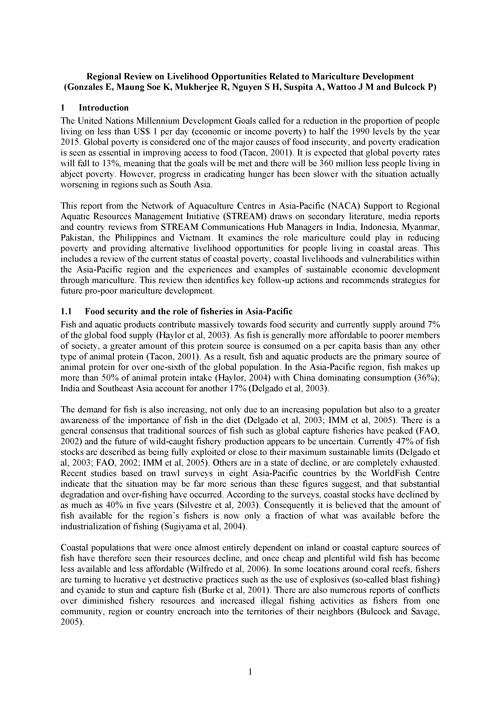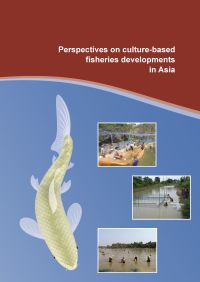Regional review on livelihood opportunities related to mariculture development
20 April 2006 | Gonzales, E., Maung Soe, K., Mukherjee, R., Nguyen, S.H., Suspita, A., Wattoo, J.M. and Bulcock, P. | 1864 Downloads | .pdf | 287.29 KB | China, Crabs and lobsters, Food Security, Safety and Certification, Gender, India, Indonesia, Livelihoods, gender and social issues, Aquatic plants, Marine finfish, Markets and trade, Molluscs (shellfish and other), Myanmar, Pakistan, Philippines, Echinoderms (sea cucumbers, urchins), Vietnam
The United Nations Millennium Development Goals called for a reduction in the proportion of people living on less than US$ 1 per day (economic or income poverty) to half the 1990 levels by the year 2015. Global poverty is considered one of the major causes of food insecurity, and poverty eradication is seen as essential in improving access to food. It is expected that global poverty rates will fall to 13%, meaning that the goals will be met and there will be 360 million less people living in abject poverty. However, progress in eradicating hunger has been slower with the situation actually worsening in regions such as South Asia.
This report from the NACA Support to Regional Aquatic Resources Management Initiative (STREAM) draws on secondary literature, media reports and country reviews from STREAM Communications Hub Managers in India, Indonesia, Myanmar, Pakistan, the Philippines and Vietnam. It examines the role mariculture could play in reducing poverty and providing alternative livelihood opportunities for people living in coastal areas. This includes a review of the current status of coastal poverty, coastal livelihoods and vulnerabilities within the Asia-Pacific region and the experiences and examples of sustainable economic development through mariculture. This review then identifies key follow-up actions and recommends strategies for future pro-poor mariculture development.
Creative Commons Attribution.

